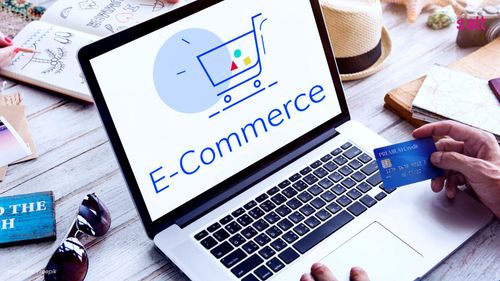
20 Oct 2025

20 Oct 2025

For long, robotic technology was seen only in factories—machines building cars or automating production lines. But that picture has changed. Today, robotics is showing up everywhere: hospitals, restaurants, warehouses, and even in our homes. Automation is no longer futuristic; it's already part of daily life.The impact is clear. People may not always notice a delivery robot, a surgical assistant, or warehouse automation, but they enjoy the results—faster service, better accuracy, and smoother experiences. Businesses across industries are scaling smarter by adding robotics into their daily operations.And this is just the beginning. Let's see how robotics moves beyond factories and transforms industries we all know.The Silent Rise of Robotics in Daily LifeRobotics has quietly become part of our routines without most people realizing it. What used to be exclusive to factories and advanced industries is now present in hospitals, homes, restaurants, and logistics centers.From cleaning robots at home to automated checkouts and delivery bots, these technologies blend into daily life almost invisibly.What makes this rise so powerful is its subtlety. Instead of replacing people, robotics often works alongside them:Supporting doctors with precision toolsHelping staff serve customers fasterHandling repetitive warehouse tasksand many more.The result is a smoother, more efficient experience for businesses and consumers, showing that automation is not distant or disruptive, but already here, shaping how the world operates today.To illustrate how robotics is spreading across industries, here are some of the largest sectors driving global revenue from automation today:Medical (27%) – robotics assists in surgeries, rehabilitation, and patient care.Domestic home services (20%) – cleaning robots, personal assistants, and home automation.Entertainment (9%) – robotic attractions, interactive shows, and smart service tools.Logistics (6%) – warehouse automation and last-mile delivery.Automotive (6%) – robotics in assembly, inspection, and smart mobility solutions.These figures highlight that robotics is no longer confined to one sector, it is quietly but steadily shaping many aspects of daily life.Industry Spotlights: Everyday Applications of Physical AutomationThe presence of robotics is no longer limited to high-tech factories. Today, industries we interact with daily are adopting physical automation to solve real-world challenges and enhance customer experience. Let's look at how different sectors are embracing robotics in practical ways:1. Food & DiningRestaurants and hotels increasingly use robots to deliver meals, assist waiters, and manage service during peak hours. These innovations free staff to focus on hospitality while ensuring faster and more consistent service. Imagine being served by a robot like PadBot W3s, designed to act as a food delivery and waiter assistant, quietly moving between tables with precision and charm.2. Retail & Customer ServicesBusinesses are finding new ways to enhance customer interactions, from automated checkouts to interactive guide robots. For instance, a robot such as PadBot X3 can greet visitors, provide directions, or handle basic customer queries, making front-desk services smoother and more engaging.3. Education & OfficesIn classrooms, robots are evolving from simple teaching aids into interactive companions. PadBot T2 serves as a toddler education robot, helping children learn through play. At the same time, PadBot P2 acts as a telepresence robot, allowing professionals to “be present” in offices or meetings even from afar.4. Cleaning & MaintenanceAutomation also thrives in tasks that demand consistency and hygiene. Commercial cleaning robots like PadBot C3 operate tirelessly to maintain cleanliness in malls, offices, or public facilities, boosting efficiency while reducing human exposure to repetitive or hazardous work.5. Data & InfrastructureData centers and large facilities require regular inspection and monitoring. Youibot ARIS-IDC, for example, specializes in inspecting data centers, ensuring stability, and reducing downtime risks. Meanwhile, aerial robotics like DJI Dock 3 provide automated drone operations for remote surveillance, agriculture, or large-scale infrastructure monitoring.Across these industries, robotics is not replacing human presence but elevating it, supporting people in tasks that require precision, consistency, or round-the-clock performance. These innovations show how physical automation is already embedded in daily life, often in ways we don't even notice.Scaling Smarter: Lessons & The Future of Robotics in BusinessAdopting robotics in business is not just about replacing human labor with machines—it's about scaling smarter. Companies that succeed with robotics often start small, learn from each stage, and gradually expand automation to more complex areas of their operations.Here are some key lessons shaping the future of robotics in business:Start with Clear ObjectivesBusinesses that define specific problems—such as reducing operational costs, minimizing errors, or improving customer experience—see better returns from automation.Integration MattersRobotics does not operate in isolation. Its true potential emerges when it’s seamlessly connected with existing systems like ERP, IoT devices, or AI-driven analytics.People Still MatterSuccessful businesses use robotics to augment, not replace, their workforce. Employees are often retrained to take on higher-value tasks while robots handle repetitive ones.Data-driven GrowthRobots are not just tools; they’re data collectors. Every task performed provides insights that businesses can leverage to refine strategies and predict future needs.Agility is KeyThe future belongs to companies that stay flexible. As robotics technology evolves, businesses must be willing to adapt, experiment, and upgrade their systems.Looking ahead, robotics in business will shift from a cost-cutting measure to a growth enabler. The focus will move toward creating smarter, data-driven ecosystems where human intelligence and robotic efficiency complement each other, reshaping industries and unlocking new possibilities.Questions about the Robotic AutomationWill robots completely replace human jobs?Not entirely. Robots are designed to handle repetitive, dangerous, or time-consuming tasks, allowing people to focus on creativity, strategy, and decision-making. The future is about collaboration, not replacement.Are robotics solutions only suitable for large enterprises?No. Robotics is becoming increasingly scalable and accessible. From small restaurants using delivery robots to large corporations deploying inspection robots, solutions can be tailored to businesses of any size.How secure are robotics systems from cyber threats?Robotics systems rely on strong cybersecurity frameworks to protect data and operations. With proper integration and monitoring, risks can be minimized while ensuring safe and reliable performance.What industries benefit most from robotics?Almost every industry, including healthcare, hospitality, manufacturing, logistics, agriculture, and even education, is adopting robotics to boost efficiency, reduce costs, and enhance customer or user experience.How can businesses leverage Robotic Solutions with SALT and Optiron?By partnering with SALT and Optiron, businesses gain access to advanced robotics such as education robots, telepresence tools, service and cleaning robots, and even automated drones. More importantly, SALT ensures these technologies are seamlessly integrated into your digital ecosystem, maximizing Return on Technology Investment (ROTI).Embracing Robotic Solutions with Optiron, a Path to Smarter GrowthRobotics is no longer a future idea, it's already transforming everyday industries. The key takeaway is simple: businesses that embrace automation scale smarter, faster, and more sustainably.Here’s what robotics brings to the table:Efficiency – Automating routine tasks for smoother operations.Safety – Reducing risks in demanding environments.Consistency – Delivering reliable performance, every time.Human focus – Freeing people for creativity and higher-value work.At SALT, through Optiron, we see robotics not as a luxury but an essential growth driver. The future is already here—it’s just waiting for businesses to take the next step.Don’t let your business fall behind in the age of physical automation. Partner with us today to unlock robotics' potential and stay ahead of the curve.

IntroductionCybersecurity is no longer just an IT concern, it's a boardroom imperative. From executive decision-making to marketing communications and infrastructure design, protecting digital assets and customer trust is central to business success.ZeroTrust, under the SALT Group, delivers advanced Cybersecurity-as-a-Service (CSaaS) built for the needs of modern organizations. Whether you manage infrastructure, digital marketing, or business strategy, our unified and intelligent defense model ensures your enterprise stays compliant, resilient, and trusted.With over 1,000 Successful Implementations, 800+ Security Professionals, and 150+ Satisfied Enterprise Clients, ZeroTrust leads the way in regional cybersecurity innovation.What is Cybersecurity-as-a-Service (CSaaS)?Cybersecurity-as-a-Service is a fully managed security model that leverages cloud-native tools, real-time threat intelligence, and automation to defend organizations of all sizes. It covers:Zero Trust access controlEndpoint, data, and application protection24/7 security operationsAI-enhanced threat detection and automated responseAI and LLM model security testingZeroTrust's CSaaS enables business and IT teams to focus on innovation while ensuring their digital ecosystems are protected from common and emerging threats.The ZeroTrust A.S.S.U.R.E. Cybersecurity FrameworkAt the core of our service is the proprietary A.S.S.U.R.E. framework—a complete model that addresses every critical component of enterprise security:A – AssessmentWe begin with a deep vulnerability and risk review, including:AI-VAPT: AI-powered Vulnerability and Penetration TestingWeb, infrastructure, and AI application reconnaissanceSecurity posture evaluation across hybrid environmentsThreat modelling and risk prioritizationS – CyberShield as a ServiceZeroTrust’s CyberShield offers on-demand, proactive defense layers for your applications and AI systems:Continuous red teaming and adversarial testingSupply chain risk evaluationAI logic, LLM architecture, and model bias analysisGovernance, Risk & Compliance (GRC) automationTrusted AI testing—fairness, explainability, and robustnessS – SecureOpsWe deliver 24/7 SOC and infrastructure oversight that includes:Threat detection via SIEM, EUBA, and log correlationEndpoint and application protectionGitHub, Active Directory, and API managementAsset discovery, real-time alerting, and automated escalationStress testing and performance monitoringU – Ultimate Threat ResponseOur security analysts and AI systems work in tandem to stop attacks in real-time:Smart detection and mitigationForensics and anti-forensicsThreat validation and response automationRapid patching across endpoints and software layersR – RemediationBeyond detection, ZeroTrust ensures your system is hardened and restored securely:Secure vulnerability patchingThreat vector isolationRisk-based remediation prioritizationWeekly, monthly, and on-demand reportingE – Essential ToolsetOur comprehensive tech stack powers every service tier and includes:SIEM, DLP, EDR, EUBA, and behavioral analyticsApplication and cloud securityWeb isolation, document handling, and drive encryptionSecure DevSecOps tools for continuous code and deployment scanningZeroTrust Benefits for Specific AudiencesFor Business LeadersGain predictable security costs and ROI through a subscription-based serviceBuild board-level confidence in risk posture, compliance, and resiliencePosition your brand as a cyber-trusted organizationFor IT DepartmentsAccess enterprise-grade tools without additional hiresAutomate security management across multi-cloud, hybrid, and remote networksFocus on transformation, not constant threat chasingFor Marketing and Brand TeamsPromote data protection and compliance as value propositionsReinforce customer trust through transparent security practicesAvoid reputational fallout with 24/7 monitoring and incident readinessClient Success Storiesa) PT Inovasi Informatika IndonesiaDelivered real-time SOC and AI threat detection using SIEM and ELK stack, improving breach response and ISO 27001 alignment.b) PT JamkrindoImplemented AI-VAPT, secured over 500 assets, and deployed full-scale remediation plans with Rapid7 and Active Directory controls.c) Indonesia Stock Exchange (IDX)Integrated Cloudflare WAF + API Gateway to secure digital transactions with JWT authentication, request filtering, and real-time traffic management.Questions about ZeroTrust CybersecurityWhat is A.S.S.U.R.E., and How does It Help My Business?It’s ZeroTrust’s proprietary model that combines assessment, protection, response, and remediation, giving businesses a holistic, responsive security structure.Can CyberShield Protect My AI Models and APIs?Yes. It includes red teaming, AI model logic testing, bias analysis, and runtime protection for LLMs, APIs, and AI applications.Can This Integrate If I Already have Internal IT Security?Absolutely. ZeroTrust’s services are modular and designed to complement internal teams, with API-driven dashboards, co-managed systems, and audit tools.How Fast Can Onboarding Happen?Typically, within 1–3 weeks, depending on the scope. Our team will guide you through pre-engagement assessment, deployment, and continuous support.What If I'm a Small Business?We offer scalable packages that give SMBs enterprise-grade protection, so you get peace of mind without enterprise-level complexity.Rely on the Right Cybersecurity with ZeroTrustYour organization doesn’t just need cybersecurity—it requires the right cybersecurity. With ZeroTrust’s A.S.S.U.R.E. framework, your enterprise gains comprehensive visibility, protection, and agility to navigate the complexities of AI, apps, and data regulation.Whether you're a business owner focused on risk, an IT leader managing systems, or a marketer protecting your brand's integrity, ZeroTrust, under SALT Group, delivers the tools, teams, and trust you need.Why ZeroTrust (Under SALT Group)?11+ years of cybersecurity excellence in Southeast AsiaRecognized as one of Indonesia’s Foremost Independent Digital AgenciesISO 27001:2022 certifiedProven frameworks and patented technologies tailored to regional compliance (UU ITE, DORA, GDPR)📧 Contact us today at hello@zerotrust.co.id🌐 Visit: www.zerotrust.co.id📞 Call: +62 21 5367 7055

In a world obsessed with productivity, the question remains: How efficient are we really? While artificial intelligence (AI) has helped businesses automate digital workflows and humans continue to bring creative problem-solving to the table, there's a critical gap that still hinders true operational excellence—physical execution. And this is exactly where Robotic Solutions comes in.Why Workplace Efficiency Still Falls ShortThe modern workplace has made remarkable strides. AI now streamlines repetitive digital tasks, accelerates decision-making, and reduces costs. Humans contribute adaptability, empathy, and leadership traits no machine can replicate.But even this powerful combination isn't enough:Artificial Intelligence (AI) lacks a physical form. It cannot move packages, greet customers, or perform surveillance.Humans tire, make errors, and struggle with repetitive, mundane, or hazardous tasks. As a result, many industries continue to struggle with hidden inefficiencies that impact both, performance and profitability.The Hidden Inefficiencies That Cost Businesses MillionsHere are some real-world issues businesses face due to these gaps: Inventory ManagementOnly 66% inventory accuracy in U.S. retail businesses4–8% of sales are lost annually due to overstocking and stockouts46% of warehouses cite human error as the top issueSecurity & SurveillanceCCTV operators miss 45% of screen activity after 12 minutes, and up to 95% after 22 minutes.Reception & HospitalityGuest satisfaction drops by 47% if check-in takes more than 5 minutes.Long queues during peak hours impact customer experience.These inefficiencies aren't just inconvenient—they're costly and, in many cases, avoidable.Robotics: The Overlooked Solution That's Already HereWhile businesses invest heavily in digital tools, many overlook a proven, physical solution: Robotics. Robots combine the precision of AI with the ability to perform tasks in the real world, without fatigue or distraction.The Benefits of Robotic Integrations24/7 operation without breaksHigher accuracy in repetitive tasksImproved safety in hazardous environmentsLower long-term costs due to automationAccording to global trends:80% of companies plan to adopt AI and robotics by 2025.South Korea leads with 1,012 robots per 10,000 workers.Indonesia has seen a 9% annual increase in robotic deployment across key sectors.Types of Robotics for Workplace TransformationProduct-based RobotsReady-to-deploy solutions are designed for specific tasks such as reception, inspection, or delivery.Customized RobotsFlexible platforms tailored to unique workflow needs, space limitations, or integration with enterprise systems.Grounded vs. Ungrounded RobotsGrounded Robots: Move using wheels, treads, or legs.Ungrounded Robots: Operate via air (e.g., drones) for aerial inspection or delivery.Industries Benefiting from Robotics TodayTelecommunication IndustryReception Robots: Handle visitor check-ins and queue management.Delivery Robots: Transport SIM cards and documents internally.FMCG & Manufacturing IndustriesInventory Robots: Scan and track stock in real-time.Transport Robots: Move goods between storage and production.Banking & Finance IndustryReception Robots: Guide customers through branches.Security Patrol Robots: Monitor for anomalies after hours.Hospitality, Retail, and OfficeEnhance guest experience through robotic greeters, security bots, and even entertainment robots.EducationInteractive robots for early childhood learning and programming education.Data Centers and Industrial FacilitiesScheduled inspections, hazardous zone monitoring, and zero-trust security implementation.Case Studies in ActionReal-world examples include:Reception Robots that reduce queue times.Data Center Robots performing scheduled equipment checks.Food Delivery Robots ensure timely and contactless delivery.Advanced Drones are used for aerial inspections and surveillance.Questions about Robotic SolutionsHow does robotic improve workplace efficiency?Robotics improves efficiency by automating repetitive, time-consuming, or dangerous physical tasks. This frees up human workers for higher-value work and reduces errors and delays.Which industries can benefit the most from robots?Telecommunications, manufacturing, finance, retail, hospitality, education, and logistics are among the top industries leveraging robotics to solve common operational challenges.Are robots replacing human jobs?Not exactly. Robots are designed to assist with tasks humans find repetitive or hazardous. In most cases, they augment human capabilities rather than replace them entirely.How affordable is robotic integration for businesses?While the upfront cost may seem high, the long-term ROI—via labor cost savings, improved efficiency, and reduced errors—often makes robotics a cost-effective investment.Can robotics be customized to fit specific business needs?Yes. Many providers offer customized robots that adapt to unique workflows, spatial constraints, and software integrations.What is the difference between AI and robotics?AI is the brain (software) that enables machines to make decisions, while robotics is the body (hardware) that performs physical tasks. Together, they create powerful autonomous systems.When will Your Industry Make the Shift?Actual efficiency doesn't stop at digital automation. To fully optimize operations, organizations must bridge the gap between digital intelligence and physical execution.Robotics offers a scalable, effective solution to today's most pressing operational challenges—whether in retail, manufacturing, finance, or hospitality. The future of efficiency is not just smart. It's autonomous.Why SALT? Your Mission-Critical Robotics PartnerAt SALT, we specialize in mission-critical robotic integration tailored to enterprise environments. Our team has deep expertise in designing and deploying both product-based and customized robotic solutions to enhance efficiency, accuracy, and safety in your operations.From reception automation and inventory robots to data center drones and autonomous security patrols, SALT delivers precision, performance, and innovation at scale.Ready to transform your workplace with robotics? Contact Us today for a tailored consultation and discover the right robotic solution for your business.

As businesses increasingly integrate technology into their daily operations, the benefits in productivity, efficiency, and growth are undeniable. However, this growing reliance on digital tools also brings a surge in cybersecurity risks—threats that can disrupt workflows, expose sensitive information, and severely impact a company's reputation if not properly addressed.Understanding the importance of cybersecurity is essential for businesses aiming to protect their assets and maintain customer trust. In this article, we explore the growing significance of cybersecurity, the threats companies face, and the best practices for safeguarding digital assets.Understanding CybersecurityCybersecurity refers to the practices, technologies, and processes designed to protect computer systems, networks, and data from unauthorized access, cyberattacks, and damage. It encompasses various domains, including network security, cloud security, endpoint protection, and data encryption. A strong cybersecurity framework ensures the confidentiality, integrity, and availability of information. The cybersecurity landscape constantly evolves, with hackers developing more sophisticated attack techniques. Businesses must adopt proactive security measures to counter these threats effectively.The Rising Threat LandscapeCyberattacks are on the rise, affecting businesses across industries. Some of the most common and emerging threats include: Ransomware AttacksMalicious software encrypts a company's data, demanding ransoms for decryption. These attacks have crippled major corporations and cost businesses millions in ransom payments and lost productivity.Phishing ScamsCybercriminals use deceptive emails and fake websites to trick employees into disclosing sensitive information such as passwords or financial details.Data BreachesUnauthorized access to sensitive customer or business data can result in severe financial and reputational damage.Insider ThreatsWhether malicious or negligent, employees can pose security risks by mishandling confidential information or falling victim to cyber scams.AI-Powered Cyber ThreatsThe use of artificial intelligence in cyberattacks, such as deepfake scams and automated hacking, is increasing the sophistication of cybercrime. Companies must stay informed about the latest cyber threats and continuously update their security measures to combat these risks.Implications of Cybersecurity BreachesA successful cyberattack can have devastating consequences for businesses, including:Financial LossesCyberattacks can result in direct financial costs due to ransom payments, fraud, or business interruptions. Small businesses often suffer the most, with cyber incidents potentially leading to bankruptcy.Reputational DamageA data breach can erode customer trust and damage a company's brand, making it challenging to retain and attract customers.Regulatory PenaltiesMany industries are subject to strict data protection laws like GDPR and HIPAA. Failing to comply can result in hefty fines and legal repercussions.Operational DisruptionsCyberattacks can shut down business operations, causing significant downtime and loss of productivity.Key Components of a Robust Cybersecurity StrategyTo mitigate cybersecurity risks, businesses should implement a comprehensive security strategy that includes:Risk AssessmentIdentifying vulnerabilities within the organization's IT infrastructure and taking proactive measures to address them.Data Protection MeasuresImplementing encryption, backup strategies, and access controls to safeguard sensitive data.Network SecurityUsing firewalls, intrusion detection systems, and secure Wi-Fi protocols to prevent unauthorized access.Multi-Factor Authentication (MFA)Requiring multiple forms of verification before granting access to critical systems.Regular Security AuditsConducting periodic cybersecurity assessments to identify and fix potential weaknesses.Cybersecurity Awareness TrainingEducating employees on recognizing cyber threats and practicing good security hygiene.Incident Response PlanEstablishing protocols for handling cyber incidents to minimize damage and recover quickly.The Role of Cyber ResilienceWhile cybersecurity focuses on preventing attacks, cyber resilience ensures that businesses can recover quickly after a breach. Cyber resilience includes:Business Continuity PlanningEnsuring critical operations continue despite cyber incidents.Disaster Recovery MeasuresHaving backups and restoration procedures in place to minimize downtime.Adaptive Security MeasuresConstantly updating security protocols to counter emerging threats.A cyber-resilient organization can withstand cyberattacks with minimal disruption, maintaining customer trust and operational stability.Regulatory and Compliance in CybersecurityBusinesses must adhere to industry regulations and cybersecurity frameworks to avoid legal consequences and enhance security. Compliance with these regulations also helps build trust with customers and business partners. Below are some key international regulations that companies should follow:General Data Protection Regulation (GDPR)Regulates data protection and privacy in the European Union, requiring companies to strictly manage and protect users' personal data.Health Insurance Portability and Accountability Act (HIPAA)Protects patient health information in the United States, ensuring that medical data is securely stored and transmitted.National Institute of Standards and Technology (NIST) FrameworkProvides guidelines for organizations to manage cybersecurity risks and strengthen resilience against cyber threats.Payment Card Industry Data Security Standard (PCI DSS)Businesses handling credit card transactions must be required to implement security measures to prevent financial data theft.Beyond regulatory compliance, companies should also adopt industry best practices, such as ISO 27001, to ensure their cybersecurity policies and practices meet global standards. By complying with these regulations, businesses can avoid significant fines, enhance data protection, and ensure customer trust and loyalty.Questions about Cybersecurity for Modern BusinessesWhat is Cybersecurity, and Why is It Important?Cybersecurity protects systems, networks, and data from digital threats, ensuring business continuity and safeguarding sensitive information.What are the Most Common Types of Cyber Threats?Common threats include ransomware, phishing attacks, data breaches, and insider threats.How Can Small Businesses Protect Themselves from Cyberattacks?Implementing security measures like firewalls, multi-factor authentication, and employee training can significantly reduce risks.What is the Role of Cybersecurity Compliance?Compliance with regulations ensures legal protection and promotes best security practices.How Can SALT Help Businesses Improve Their Cybersecurity?SALT offers customized security solutions, threat protection, and expert support to help businesses strengthen their defenses.What Steps Should a Company Take after a Cyberattack?Companies should contain the breach, notify stakeholders, assess damages, and enhance security to prevent future incidents.Why is Cyber Resilience Important?Cyber resilience ensures that businesses can recover quickly from cyber incidents, minimizing operational disruptions.How Can I Get Started with SALT's Cybersecurity Services?Contact SALT today to schedule a consultation and secure your business against cyber threats.SALT: Your Mission-Critical Technology Partner in CybersecurityCyber threats are growing in complexity, making strong cybersecurity not just important but essential. To safeguard their data, finances, and reputation, businesses need to take a proactive approach by implementing resilient security strategies.Navigating cybersecurity challenges requires expert guidance and tailored solutions. SALT is a trusted cybersecurity partner that provides:Comprehensive Security Assessments: Identifying and mitigating potential risks in your IT environment.Advanced Threat Protection: Deploying state-of-the-art security measures to defend against cyber threats.Incident Response & Recovery: Helping businesses recover quickly from cyberattacks with minimal disruption.Ongoing Cybersecurity Support: Offering continuous monitoring and security updates to ensure long-term protection.By implementing a strong cybersecurity strategy and partnering with experts like SALT, organizations can mitigate risks, enhance resilience, and ensure a secure digital future.Don't wait until a cyberattack disrupts your business. Take action today! Contact SALT to discuss your cybersecurity needs and build a strong defense against evolving threats.

For businesses that want to excel in the digital age, understanding e-commerce platforms is essential, as they are no longer just an option but a necessity for success.In this article, we will delve into the comprehensive aspects of e-commerce platforms and provide guidance on how to maximize their impact to achieve business growth objectives.Understanding the E-Commerce PlatformDefinition and Evolution of E-commerceE-commerce, short for electronic commerce, refers to the buying and selling of goods and services over the internet. Its origins trace back to 1979 when English inventor Michael Aldrich connected a television to a transaction-processing computer via a telephone line, creating the first semblance of online shopping.Since then, e-commerce has evolved from rudimentary electronic data exchanges to sophisticated digital marketplaces that cater to a global audience.Types of E-Commerce PlatformsE-commerce platforms can be broadly categorized based on their hosting environment and source code accessibility:Hosted vs. Self-Hosted SolutionsHosted platforms are managed by third-party providers, offering businesses a ready-to-use infrastructure without the need for extensive technical expertise. Examples include Shopify and BigCommerce. In contrast, self-hosted solutions require businesses to set up and maintain their own servers, providing greater control and customization at the expense of increased responsibility.Open-Source vs. Proprietary SystemsOpen-source platforms like WooCommerce and Magento allow users to access and modify the source code, fostering flexibility and community-driven enhancements. Proprietary systems, on the other hand, are developed and maintained by specific companies, offering a more controlled environment with dedicated support but limited customization options.Core Functions of E-Commerce PlatformsStorefront Design and CustomizationA compelling online storefront serves as the digital facade of a business, mirroring its brand identity and values. E-commerce platforms provide tools and templates that enable businesses to design intuitive, aesthetically pleasing interfaces, ensuring a seamless user experience that encourages engagement and conversions.Product ManagementEfficient product management is vital for maintaining an organized and up-to-date catalogue. Features such as bulk uploads, inventory tracking, and dynamic pricing adjustments empower businesses to manage their offerings effectively, reducing errors and enhancing customer satisfaction.Secure Payment ProcessingTrust is paramount in online transactions. E-commerce platforms integrate with various payment gateways to facilitate secure, encrypted transactions, accommodating multiple payment methods to cater to diverse customer preferences.Order Fulfilment and LogisticsStreamlining the journey from order placement to delivery is crucial for operational efficiency. E-commerce platforms often feature integrations with shipping carriers, automated order processing, and real-time tracking, ensuring timely and accurate deliveries that bolster customer trust.Customer Relationship Management (CRM)Building and nurturing customer relationships are central to sustained business growth. Integrated CRM tools within e-commerce platforms allow businesses to collect and analyze customer data, personalize marketing efforts, and implement loyalty programs, fostering a loyal customer base.Strategic Advantages for BusinessesE-commerce as a Market Expansion StrategyE-commerce platforms dismantle geographical barriers, enabling businesses to reach a global audience. This expanded market access opens avenues for increased sales and brand recognition beyond local confines.E-commerce for Operational EfficiencyAutomation of routine tasks such as inventory management, billing, and customer support reduces operational costs and minimizes human error. This efficiency allows businesses to allocate resources strategically, focusing on growth and innovation.E-commerce Data-Driven Decision MakingE-commerce platforms offer robust analytics tools that provide insights into customer behaviour, sales trends, and marketing effectiveness. Leveraging this data enables businesses to make informed decisions, tailor strategies, and predict market shifts.Considerations for Selecting an E-Commerce PlatformBusiness ScalabilityAs businesses grow, their e-commerce platforms must accommodate increased traffic, product listings, and transactions. Choosing a scalable solution ensures that the platform can evolve in tandem with business expansion without compromising performance.Strategy Customization and FlexibilityEvery business has unique needs and branding requirements. A platform that offers extensive customization options allows businesses to tailor functionalities and aesthetics to align with their specific objectives and customer expectations.System Integration CapabilitiesSeamless integration with existing systems such as Enterprise Resource Planning (ERP), Customer Relationship Management (CRM), and marketing automation tools is essential for streamlined operations. An ideal e-commerce platform should support easy integration with a wide range of third-party applications.Corporate Security and ComplianceProtecting customer data and ensuring secure transactions are non-negotiable. Platforms must comply with industry standards and regulations, such as the Payment Card Industry Data Security Standard (PCI DSS), to safeguard against data breaches and build customer trust.Questions about E-commerce PlatformsWhat is an E-commerce Platform?An e-commerce platform is a software solution that allows businesses to create, manage, and operate online stores. It provides essential tools for selling products or services over the internet, including payment processing, inventory management, and customer engagement features.Why is an E-commerce Platform Important for Businesses?An e-commerce platform enables businesses to reach a global audience, operate 24/7, reduce operational costs, and gain valuable insights into customer behaviour. It streamlines online sales, enhances efficiency, and provides scalability for growth.What are the Different Types of E-commerce Platforms?Hosted Platforms: Managed by third-party providers, offering ease of use (e.g., Shopify, BigCommerce).Self-Hosted Platforms: Require businesses to manage their own servers (e.g., WooCommerce, Magento).Open-Source Platforms: Allow customization and flexibility (e.g., WooCommerce, Magento).Proprietary Platforms: Closed systems with dedicated support but limited customization (e.g., Salesforce Commerce Cloud).What are the Key Features of an E-commerce Platform?Storefront design and customizationProduct catalogue and inventory managementSecure payment processingOrder fulfilment and logisticsCustomer Relationship Management (CRM)Data analytics and reportingHow Do I Choose the Right E-commerce Platform for My Business? You can consider these factors:Business Scalability: Can the platform grow with your business?Customization: Does it allow for brand-specific modifications?System Integration: Can it connect with your existing tools (CRM, ERP, marketing software)?Security: Is it PCI-compliant and capable of protecting customer data?Cost: Does it fit within your budget?How Does an E-commerce Platform Improve Operational Efficiency?By automating repetitive tasks like order processing, inventory tracking, and customer support, businesses can reduce errors, save time, and focus on growth strategies.Can I Integrate My Existing Business Systems with an E-commerce Platform?Yes. Most modern e-commerce platforms support integrations with ERP, CRM, payment gateways, shipping providers, and marketing automation tools to create a seamless workflow.How Does SALT Enhance E-commerce Platform Performance?SALT provides tailored e-commerce solutions, advanced integrations, and robust security features to optimize business operations. SALT specializes in custom development, ensuring that e-commerce platforms are scalable, efficient, and aligned with business goals.Can I Migrate My Existing Online Store to a New E-commerce Platform?Yes, SALT offers migration services to transfer your current store to a new, customized platform while ensuring data security and minimal downtime.How Do I Get Started with SALT for My E-commerce Project?Contact SALT today to discuss your business needs and explore customized e-commerce solutions designed for growth and efficiency.SALT: Your Mission-Critical Technology Partner in E-Commerce SolutionsYour business deserves a powerful, scalable, and efficient e-commerce platform that drives growth and customer engagement. Whether you're starting fresh, looking to optimize your current platform, or planning a seamless migration, SALT is your trusted technology partner through:Tailored E-Commerce DevelopmentSALT specializes in developing robust and scalable e-commerce websites customized to align with specific business objectives. By understanding unique challenges and goals, SALT crafts solutions that enhance online presence and drive sales.Advanced E-commerce Features and IntegrationsImplementing cutting-edge functionalities, SALT enhances user experience and operational efficiency. Features such as responsive web design, microservices architecture, and tech operations solutions ensure that e-commerce platforms are agile, user-friendly, and capable of handling complex operations.Book Your Free Consultation Today!Let's explore how SALT can help you build a high-performing e-commerce platform that maximizes revenue and operational efficiency. Contact us now to schedule a personalized consultation and take your online business to the next level!

The financial world is evolving at an unprecedented pace. Customers now expect banking and investment services to be as seamless and user-friendly as their favorite mobile apps. They demand instant transactions, personalized experiences, and round-the-clock accessibility.Meanwhile, tech-driven startups are emerging with innovative solutions that challenge traditional financial institutions by offering faster, more cost-effective services. Furthermore, regulatory requirements continue to tighten, compelling financial businesses to adopt technology for compliance and security. Financial institutions must move beyond traditional practices and fully embrace digital transformation to stay competitive. This shift isn't just about adopting new tools—it requires a fundamental change in business models, ensuring banking and financial services are as digital-friendly as modern consumer experiences.The Need for Technological Transformation in Financial ServicesThe financial services industry (FSI) faces mounting pressure to innovate. The transformation is not merely about modernization but about ensuring long-term sustainability and growth through technology integration.Challenges Driving the Need for Change:Regulatory ComplianceFinancial institutions must navigate increasingly complex regulatory frameworks, requiring significant investment in technology for compliance, data security, and fraud prevention.Customer ExpectationsConsumers expect personalized, mobile-first experiences. Traditional banking systems often struggle to meet these expectations due to outdated infrastructure.Fintech DisruptionAgile fintech start-ups leverage advanced technologies to provide more efficient and cost-effective services, challenging traditional business models.Opportunities Enabled by Technology:Enhanced Operational EfficiencyAutomation, AI, and cloud computing streamline processes, reducing costs and increasing productivity.Improved Customer EngagementAI-driven chatbots, intuitive mobile apps, and personalized financial services enhance user satisfaction and retention.Expanded Service OfferingsDigital wallets, AI-driven financial planning, and blockchain-based solutions create new revenue opportunities.Embracing digital transformation is no longer optional—it is a business imperative. By addressing these challenges and leveraging emerging technologies, financial institutions can secure a competitive edge in the digital era.Key Technologies Driving Financial Services TransformationThe digital revolution in financial services is powered by a suite of cutting-edge technologies that optimize efficiency, security, and customer experiences.1. Artificial Intelligence (AI) and Machine Learning (ML)AI and ML are revolutionizing risk management, fraud detection, and customer engagement. By analyzing large data sets, these technologies offer:Personalized Financial RecommendationsAI analyzes customer data to offer tailored financial advice, investment strategies, and product suggestions based on individual needs and behaviors.Automated Customer Support via AI-Powered ChatbotsAI-driven chatbots provide instant, 24/7 customer assistance, answering queries, processing transactions, and guiding users through financial services without human intervention.Advanced Fraud Detection through Pattern RecognitionMachine learning algorithms detect unusual transaction patterns and anomalies, identifying potential fraud in real-time to enhance security and prevent financial losses.2. Blockchain and Distributed Ledger Technology (DLT)Blockchain enhances transparency and security in financial transactions. Benefits include:Fraud Reduction through Immutable Transaction RecordsBlockchain ensures transaction data cannot be altered or tampered with, creating a transparent and secure financial ecosystem that minimizes fraud risks.Smart Contracts that Automate Agreements and Eliminate IntermediariesSelf-executing contracts on the blockchain automatically enforce terms, reducing the need for middlemen, lowering costs, and increasing efficiency.Secure Cross-Border Payments with Reduced Processing TimesBlockchain enables faster, more secure international transactions by eliminating traditional banking delays and reducing transaction fees.3. Cloud ComputingCloud technology provides financial institutions with scalable, cost-efficient infrastructure, enabling:Flexible and Secure Data StorageCloud computing allows financial institutions to store and access data securely from anywhere with scalable solutions that adapt to business needs.Real-time Analytics for Improved Decision-MakingCloud-powered analytics process large data sets instantly, providing actionable insights that enhance financial forecasting, risk assessment, and customer personalization.Reduced Costs Associated with On-Premise IT SystemsCloud infrastructure eliminates the need for expensive physical servers, reducing maintenance costs while offering more efficient and cost-effective data management solutions.4. Robotic Process Automation (RPA)RPA automates repetitive processes such as:Data Entry and ReconciliationRobotic Process Automation (RPA) automates repetitive data input and cross-checking, ensuring accuracy and reducing manual workload.Regulatory Reporting and Compliance ChecksAutomated systems streamline compliance by monitoring transactions, generating reports, and ensuring adherence to financial regulations in real-time.Customer Onboarding and Account ManagementRPA accelerates the onboarding process by automating identity verification, document processing, and account setup, enhancing customer experience and operational efficiency.Strategic implementation of these technologies empowers financial institutions to enhance efficiency, security, and innovation.Strategies for Successful Technology Integration in Financial ServicesAdopting new technology is not enough. Institutions must develop a strategic, organization-wide approach to ensure successful implementation.Developing a Clear Digital StrategyAlign technology initiatives with business objectives.Secure stakeholder buy-in to drive digital transformation.Focus on enhancing customer experience and operational efficiency.Investing in Talent and CultureTrain employees in digital competencies to maximize technology utilization.Foster a culture of innovation and adaptability.Encourage collaboration between IT teams and business units.Collaborating with Technology PartnersLeverage external expertise to accelerate digital adoption.Partner with fintech firms and technology providers for innovative solutions.Analyze case studies to identify best practices in successful partnerships.By adopting these strategies, financial institutions can maximize the impact of digital transformation and position themselves for long-term success.Questions about Strategic Digital Transformation in Financial ServicesWhy is Digital Transformation Essential in Financial Services?Digital transformation enhances efficiency, improves customer experiences, ensures regulatory compliance, and helps financial institutions remain competitive in an evolving industry.How Can AI and Machine Learning Improve Financial Services?AI and ML optimize risk management, personalize customer interactions, detect fraudulent activities, and automate decision-making processes.What Role Does Blockchain Play in Financial Security?Blockchain ensures secure, transparent, and immutable transactions, reduces fraud, improves cross-border payments, and enables smart contracts.How Does Cloud Computing Benefit Financial Institutions?Cloud computing offers scalable infrastructure, cost efficiency, enhanced security, and real-time data analytics, improving operational efficiency.What is Robotic Process Automation (RPA) in Banking?RPA automates routine tasks like data entry, compliance checks, and account management, improving accuracy and efficiency.How Can Financial Institutions Develop a Successful Digital Strategy?A clear digital strategy aligns technology investments with business objectives, secures stakeholder buy-in, and prioritizes customer experience.Why is Fintech Competition a Challenge for Traditional Banks?Fintech companies leverage advanced technology to offer cost-effective, faster, and more user-friendly financial services, disrupting traditional banking models.How Can Financial Institutions Train Employees for Digital Transformation?Training programs should focus on technical skills, innovation, adaptability, and collaboration to maximize technology adoption.What are the Benefits of Partnering with Technology Providers?Technology partnerships provide expertise, access to advanced tools, and proven strategies for seamless digital transformation.How Can SALT Help Financial Institutions with Digital Transformation?SALT provides tailored digital solutions, strategic guidance, and ongoing support to help financial institutions navigate and succeed in their transformation journey.SALT, Your Mission-Critical Technology Partner for Financial Services TransformationFinancial institutions require a reliable partner with deep industry expertise in the complex digital transformation landscape. This is where SALT emerges as a strategic enabler.SALT's Expertise and OfferingsSALT provides customized technology solutions specifically designed for financial services. Their approach is structured around five pillars:Strategy – Aligning digital transformation with business goals.Analyze – Identifying inefficiencies and opportunities.Build – Implementing technology solutions tailored to institutional needs.Enable – Training teams and optimizing workflows.Reinforce – Continuous monitoring and improvement.Client Success StoriesSALT's proven track record includes:Enhancing Operational Efficiency through AI-driven automationImproving Customer Experiences with personalized digital solutionsDriving Innovations with cloud-based financial toolsBy partnering with SALT, financial institutions gain access to cutting-edge technologies and expert guidance, ensuring they stay competitive in an ever-evolving digital landscape.Connect with SALT today to discover how our expertise can empower your business to stay ahead in the financial services industry. Build a scalable, secure, and future-ready technology foundation for lasting success.